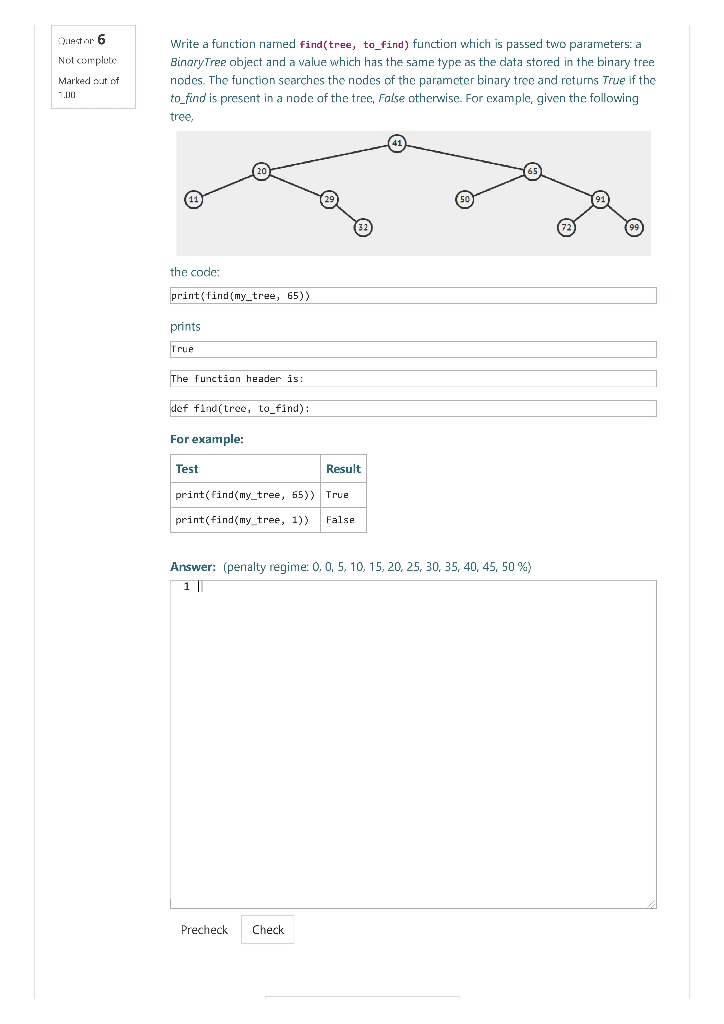Question
class BinaryTree: def __init__(self, data): self.data = data self.left = None self.right = None def insert_left(self, new_data): if self.left == None: self.left = BinaryTree(new_data) else:
class BinaryTree: def __init__(self, data): self.data = data self.left = None self.right = None
def insert_left(self, new_data): if self.left == None: self.left = BinaryTree(new_data) else: t = BinaryTree(new_data) t.left = self.left self.left = t
def insert_right(self, new_data): if self.right == None: self.right = BinaryTree(new_data) else: t = BinaryTree(new_data) t.right = self.right self.right = t
def get_left(self): return self.left
def get_right(self): return self.right
def set_data(self, data): self.data = data
def get_data(self): return self.data 
Step by Step Solution
There are 3 Steps involved in it
Step: 1

Get Instant Access to Expert-Tailored Solutions
See step-by-step solutions with expert insights and AI powered tools for academic success
Step: 2

Step: 3

Ace Your Homework with AI
Get the answers you need in no time with our AI-driven, step-by-step assistance
Get Started


